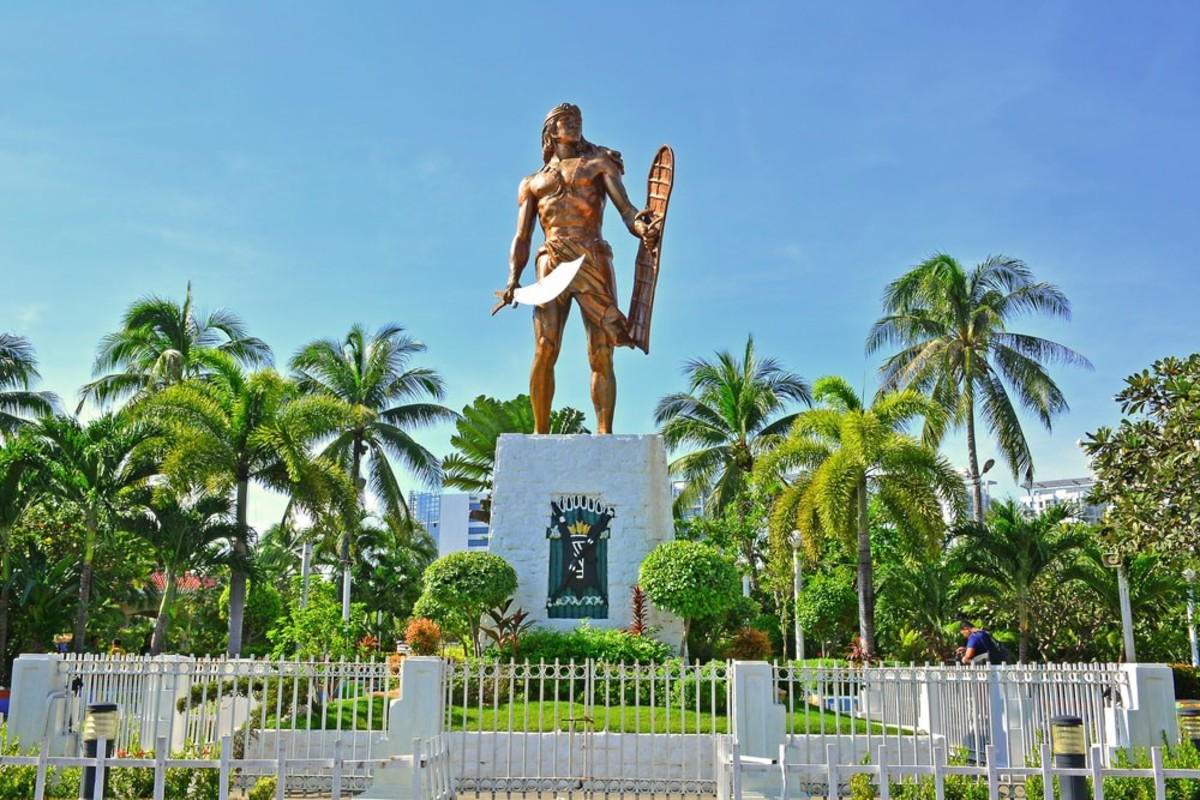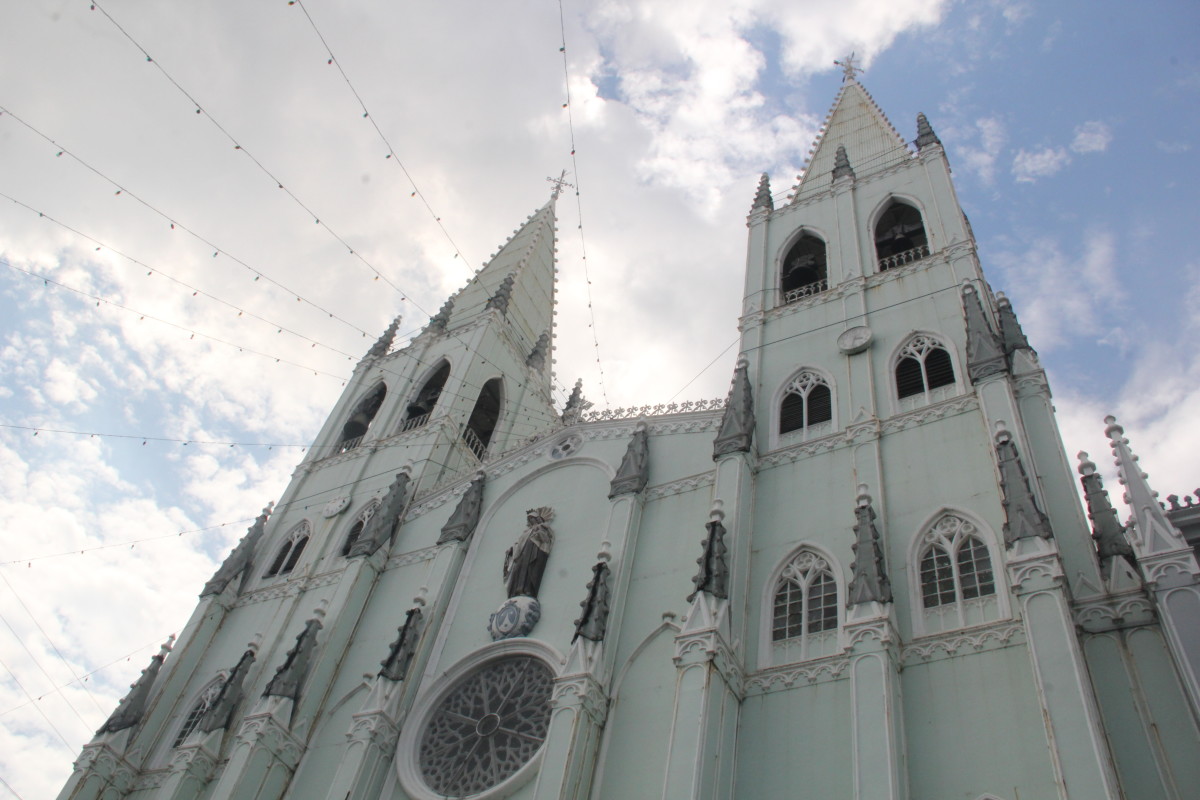- HubPages»
- Travel and Places»
- Visiting Asia»
- Southeastern Asia»
- Philippines
Surprising Reasons to Visit Cebu, Philippines
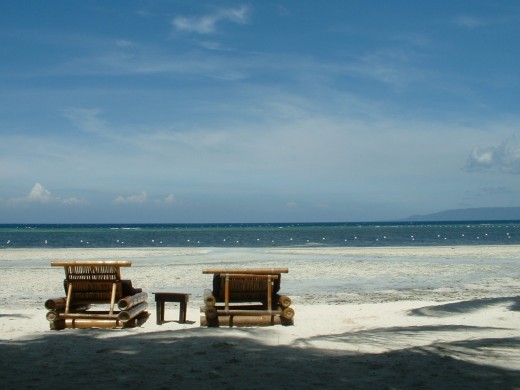
Lifestyle preferences vary. For many people, the grass is always greener on the other side of the fence—or other side of the planet. For me, the grass is greenest wherever I am.
I do, however, occasionally miss a good Mexican food dinner (the Americanized kind) and also Tommy burgers (from the original California Tommy's® chain). But my wife is an excellent cook and my stomach remains happy.
Here in Cebu, Philippines, one of my favorite dishes is called kinilaw—raw fish with garlic, ginger, onions, tomato, peppers, vinegar (or calamansi juice; like lime juice) and sometimes coconut milk. I pour mine on a bed of rice. Yum! Some places make a better kinilaw than others, but that's always the case with your favorite dish. Pork dishes are prevalent, but I tend to go for seafood, chicken and vegetables.
In the United States, I was working as a software engineer. I had graduated summa cum laude in Information Technology, and making fairly good money, between $55k–120k per year. Now, I make only two or three hundred a week. And rent is only $24/month. What a change!
I have lived in the Philippines Islands since September, 2007. That's more than four years, now.
For Philippines tourism, you can go the traditional hotel or resort route, or you can go native, so to speak, and rent something a bit more rustic. Of course, that depends on your preferences and on how long you plan to stay.
Transportation
Philippines travel is inexpensive and there are many options. I no longer have a car. Don't need one. A trysikad trip around the neighborhood costs only 5-6 pesos (about 10¢, American); trysikad is a tricycle—bicycle pedals and a passenger seat for two. You can pay 10 pesos if you want to ride alone.
For slightly longer distances, there is the tricycle, which is a motorcycle with a rather large sidecar. This can seat four without too much difficulty, and another two passengers behind the driver. Sometimes, I've seen up to ten, including children, riding these. Costs frequently hover around 7-10 pesos, depending on the distance traveled. Special trips to your own house can be commissioned for 30-40 pesos (60-80¢), say when you have a load of groceries.
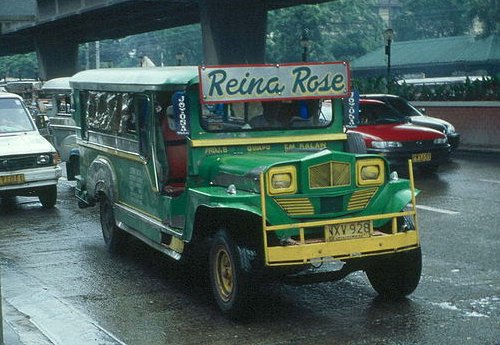
The real workhorse of public transportation in the Philippines is the jeepney. This is a small open van of varying sizes. But watch out for head room. In some, I have to sit stooped over just to fit inside, and to keep from banking my head on a metal brace when the vehicle hits a bump. But you get used to such things. During the day on main thoroughfares, jeepney traffic is usually thick. Some jeepneys will have conductors hawking their destinations, keeping a watchful eye out for potential passengers. Competition is fierce. Passengers travel this way for anywhere between half a kilometer to forty kilometers. Cost ranges from 5-15 pesos (10-30¢).
There are plenty of taxis, too. All of them that I've seen are air-conditioned. You can travel for 40 kilometers for around 250 pesos ($5.00). I don't think I've ever paid that little for a taxi in the United States.
For longer trips, buses are available, many of them air-conditioned. A 100-kilometer trip might cost 50-100 pesos ($1-2).
Ferries handle travel between islands. There are slow boats and faster craft with a wide range in prices, but still relatively inexpensive. A two-hour trip from Cebu City to Bohol, for instance, might cost 500 pesos round trip ($12).
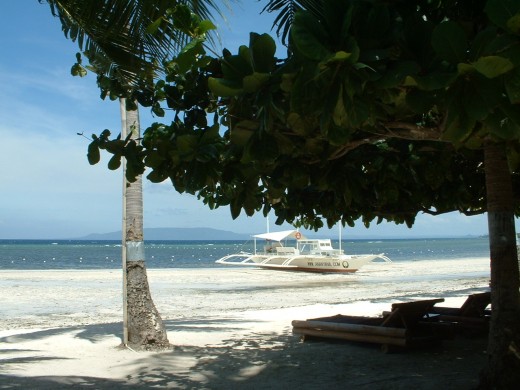
Lodging
There are many Western chain hotels in places like Manila or Cebu City and you can pay American-style prices, too. You can also pay much smaller prices for your night's stay. For example, the there's the Cebu Midtown for 3,100 pesos ($75).
There are lots of resorts in the Philippines, Cebu included. But nearby Bohol is my favorite for getaways. They also speak Cebuano and some English there.
A 2-hour ferry ride takes you to nearby Bohol. The MetroCentre in Tagbilaran, Bohol, a modest, but clean room will cost 1,400 pesos ($33), while the spacious and posh Presidential Suite will cost 7,950 pesos ($189). You won't quite get lost in it, but it is very big, with a Jacuzzi-style tub, polished stone floors, effective air-conditioning, separate shower, extremely large bathroom, huge bedroom, and a roomy combination living and dining space, where you and your significant other can share a private breakfast, before traveling to beautiful Panglao Island (connected by bridge), visiting the tarsier refuge at Loboc River, or taking in the Chocolate Hills.
If you don't mind spending a bit more for exotic pampering, my favorite is Ananyana Beach Resort—1 room for 2 people, $220 per night. They also have diving if you're into exploring underwater.

Living in Cebu, Philippines
Prices in the Philippines vary greatly. You can buy food imported from America and pay American prices for it, or you can pay somewhat less for local dishes or fresh seafood. If you eat out, you can pay anywhere from 400 to 1,200 pesos ($10–30) for a sumptuous meal for 4.
Rents vary greatly, too. In the city, you can pay 10,000 pesos ($240) per month for a roomy apartment. In the small town of Lilo-an, where I live with my wife, Juvy, we pay 1,000 pesos ($24) per month. One room is air-conditioned, and we own our own refrigerator. Electricity costs us about 4,000 pesos ($95) per month, and internet connection is another 1,000 pesos ($24). It isn't the fanciest place.
Most neighborhoods are noisy. Naturally, kids create their own joy, wherever you are. Add to that the sounds of roosters, blaring stereos, video karaoke spewing off-key notes throughout the neighborhood alternately from several households, and occasionally into the wee hours of the morning. I cherish the moments of quiet when they come. But I'm becoming acclimated to the rich audio of my new life.
Poverty and pollution are also common. Public urination, though illegal, is common from the men. The Philippines has many natural resources. The beauty of the country is one of them, and it remains sad to see so little being done to properly dispose of trash. But it's a complex problem. Because of the poverty, a trash receptacle will never stay in one place. Someone else will always find a better use for it. Much as any place, people can be lazy and tossing a wrapper to the ground is common enough here. The trouble is it tends to pile up. Some good neighbors sweep it up and hold it for the trash collectors, or burn it.
If you stay in the resorts, you won't see much of this, except during travel from and to the airport.

Language
For Luzon (the main island, where Manila, the capital, resides), English is a second language. For the parts of the Philippines which have a first language different than Filipino (based on Tagalog), English is a third language, with Filipino their second language. Millions of people here speak two, three and sometimes four languages. I'm still struggling to learn Cebuano, the local language of the Central Visayas.
I know of a few arrogant Americans who look down their noses at learning another language; and "English first" for all Americans. They despise hearing the pledge of allegiance said in Spanish or some other language. Is that fear and ego talking? Oi!
The point is that, here in the Philippines, you will likely find someone who speaks at least a little English, everywhere you go. In my non-materialistic, Filipino family, nearly everyone speaks some English. I can carry on conversations with several of them, yet only my wife, Juvy, seems entirely fluent. Of course, she was valedictorian in High School, earning a rare scholarship to college.
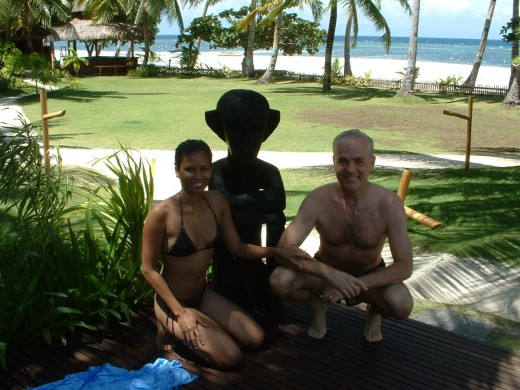
Weather
The temperature is usually warm, sometimes hot and frequently humid. But occasionally, it becomes downright cool—just the way I like it. My wife says it's cold and asks if I want a coat. And there I am in short sleeves, feeling just right. Some places in the hills, in the interior of Cebu get very cold at night. A thick blanket and snuggling are mandatory.
The Philippines has three seasons—one hot dry (their "summer," March to May), one rainy (June to November), and one cool dry season (December to February). Since I've been here, though, the cool and the rainy seem to have merged into one.
Typhoons (hurricanes) sometimes invade the Philippines, and while they can be dangerous in some areas, the center of the Philippines seems largely protected from the fiercest of the storms' rage. All I've ever seen is a little heavy rain and some moderate winds (30 mph, tops).

Life is Good
I recommend travel to the Philippines, especially Cebu, Philippines. You have modern mixed with native in any proportions you want.
I now live a rather simple life. I work online for an international company, writing articles. It's interesting work, and when I'm not busy helping my online customers, I'm working on my writing, websites or designing new software.
My wife, Juvy, thinks I'm a workaholic. Not compared to where I was before. I no longer put in 60+ hour weeks, or work 24-hour days. And I don't miss it. At age sixty, I may be slowing down a bit, but I still have far too much to do merely to roll over and die.
Life is good and I'm enjoying my new neighborhood, here in the Philippines.





